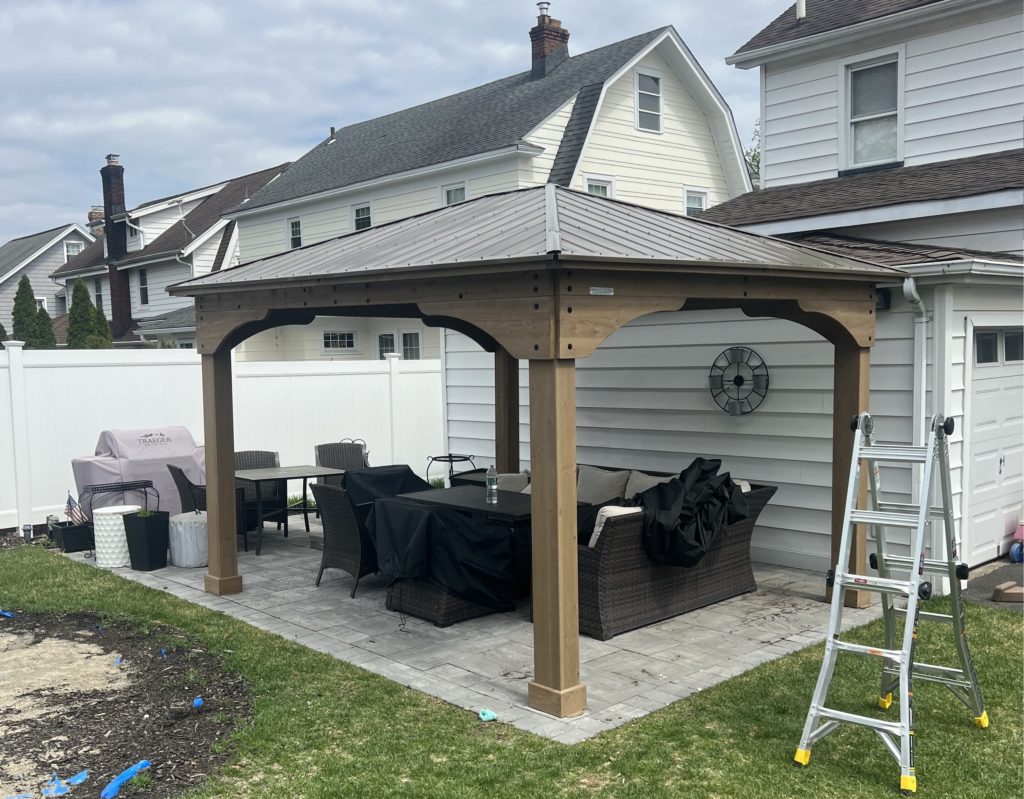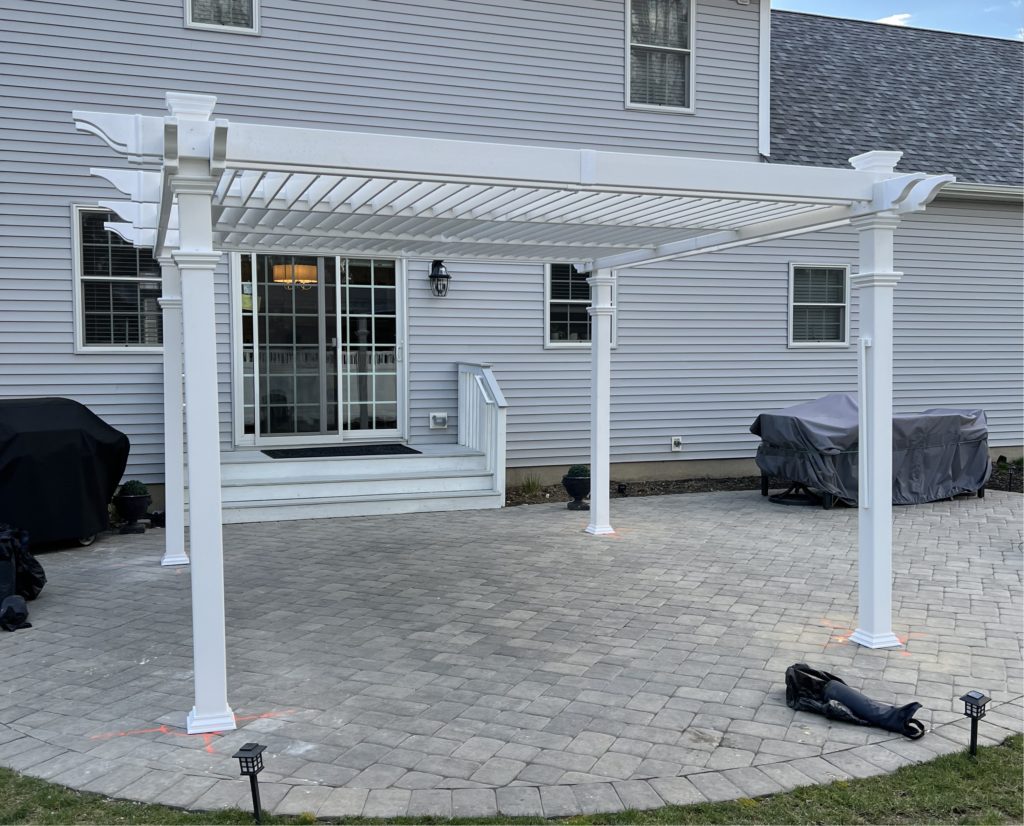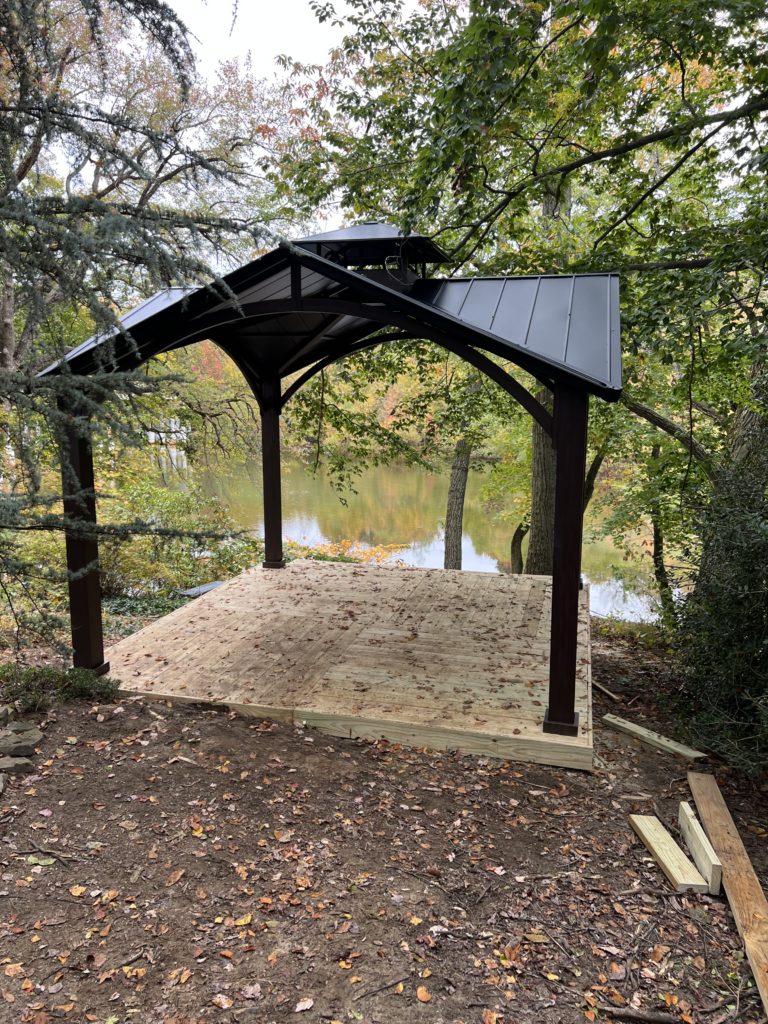If you’re living in Ringwood, New Jersey and you’re looking to install, replace or repair a ceiling fan, you’ve come to the right place. Ceiling fans are not only functional, but they also add a touch of style to any room. Whether you want to cool down a stuffy bedroom or add some ambiance to your living room, a ceiling fan can be a great addition to your home.
OUR CONTACT
Email Support:
info@gazebo-installation.com
Ask your question:
info@gazebo-installation.com
Some of Our Portfolio Gazebo and Pergola Assembly Projects



Installing a ceiling fan may seem like a simple task, but it requires proper electrical work and attention to detail. This is where our team of skilled professionals comes in. We specialize in ceiling fan installation, replacement and repair, and we have the knowledge and expertise to get the job done right.
When it comes to installation, safety is our top priority. Our team is well-versed in electrical wiring and will ensure that your ceiling fan is properly connected and securely mounted. We will also make sure that it is balanced and operates smoothly.
If you already have a ceiling fan that is not functioning properly, we can diagnose the issue and provide the necessary repairs. Whether it’s a faulty motor, a loose connection, or a broken pull chain, we have the tools and expertise to fix it.
Ceiling Fan Installation: Tips and Tricks for a Smooth Process
Installing a ceiling fan can be a great addition to any room, providing both functionality and aesthetic appeal. Whether you’re replacing an old fan or installing a new one from scratch, it’s important to follow certain tips and tricks to ensure a smooth installation process. Here are some useful guidelines to help you with your ceiling fan installation project:
1. Gather the Necessary Tools and Materials
Before you begin installing the ceiling fan, make sure you have all the necessary tools and materials at hand. This includes a ladder, screwdriver, wire cutters, pliers, electrical tape, and a circuit tester. Additionally, ensure you have purchased the correct size and style of fan for your space.
2. Turn Off the Power Supply
Before you start working on the installation, turn off the power supply to the room where the ceiling fan will be installed. This step is crucial for your safety and prevents any electrical accidents. Use a circuit tester to double-check that the power is indeed off before proceeding.
3. Follow the Manufacturer’s Instructions
Each ceiling fan model may have specific installation instructions provided by the manufacturer. It is crucial to read and follow these instructions carefully. They will guide you through the process, including important information on wiring, placement, and securing the fan properly.
4. Take Your Time During Wiring
Proper wiring is essential for the safe and effective operation of your ceiling fan. Take your time to ensure all wires are connected securely and correctly. It’s recommended to consult a professional electrician if you are unsure about any electrical connections. Remember to use electrical tape to secure the wire connections and prevent any exposed wires.
5. Secure the Fan Properly
Ensure that the ceiling fan is securely mounted to the ceiling to avoid any accidents or wobbling. Follow the manufacturer’s instructions for proper attachment, using the provided screws and brackets. Double-check that all connections are secure before turning on the power.
By following these tips and tricks, you can ensure a smooth ceiling fan installation process. However, if you’re unsure about any aspect of the installation or prefer to have a professional handle it, don’t hesitate to reach out to a licensed electrician or handyman.
Assessing the Space: Determining the Perfect Location for Your Ceiling Fan
When it comes to installing a ceiling fan in your home or office in Ringwood, NJ, determining the perfect location is crucial for optimal functionality and comfort. Assessing the space where the fan will be placed is the first step in ensuring an efficient installation and air circulation throughout the room.
Before installing a ceiling fan, it is important to consider various factors such as the height of the ceiling, the size of the room, and the location of existing light fixtures. These factors will heavily influence the placement of the fan and its effectiveness in providing both cooling and lighting capabilities.
Height of the Ceiling
The height of the ceiling is a significant factor in determining where the ceiling fan should be installed. Ideally, the fan blades should be at least 8 feet above the floor to prevent any safety hazards and ensure proper air circulation. If the ceiling is higher than 10 feet, additional downrods may be required to lower the fan to the appropriate height for optimal performance.
Size of the Room
The size of the room also plays a crucial role in determining the perfect location for your ceiling fan. For large rooms, it is recommended to install multiple fans to ensure consistent air circulation. On the other hand, smaller rooms may require a single fan placed strategically to cover the entire space effectively.
Location of Existing Light Fixtures
If there are existing light fixtures in the room, it is important to consider their location when choosing the placement of your ceiling fan. This will help avoid any conflicting positions that may affect the functionality or aesthetics of both the fan and the lighting. It is often possible to replace a light fixture with a ceiling fan that incorporates both cooling and lighting features for added convenience.
In conclusion, assessing the space is crucial when determining the perfect location for your ceiling fan installation in Ringwood, NJ. Considering factors such as the height of the ceiling, the size of the room, and the location of existing light fixtures will help you make an informed decision and ensure that your ceiling fan provides optimal cooling and comfort.
Choosing the Right Ceiling Fan: Factors to Consider for Optimal Performance
When it comes to choosing a ceiling fan for your home in Ringwood NJ, it’s important to consider several factors to ensure optimal performance. A ceiling fan not only helps to cool the room but also adds to its aesthetic appeal. So, making the right choice is essential for both comfort and style.
Size: The size of the room plays a crucial role in determining the size of the ceiling fan. For smaller rooms, a fan with a blade span of 36-42 inches is generally sufficient. Medium-sized rooms can accommodate fans with blade spans of 44-50 inches. Larger rooms may require fans with a blade span of 52 inches or more. Choosing the right size fan ensures effective air circulation and proper cooling of the room.
Style: Ceiling fans are available in a variety of styles, ranging from traditional to modern and everything in between. Consider the decor and overall style of your room when choosing a fan. Whether you prefer a sleek and contemporary design or a more classic look, there are options to suit every taste. Choose a fan that complements the existing aesthetics and enhances the overall ambiance of the room.
- Noise Level: Nobody wants a noisy ceiling fan disturbing their peace and quiet. When selecting a fan, pay attention to its noise level. Look for models that are designed to operate quietly, ensuring that the fan doesn’t become a source of irritation or distraction in your home.
- Energy Efficiency: Opting for an energy-efficient ceiling fan can help you save on your energy bills. Look for fans with the ENERGY STAR® label, as they are specifically designed to consume less energy while providing superior performance. These fans not only help you save money but also reduce your carbon footprint.
- Speed and Control: Consider the number of speed options and control mechanisms available with the ceiling fan. Some fans come with remote controls, allowing you to adjust the fan speed and direction without leaving your seat. Others may have pull chains or wall switches. Choose a fan with a control mechanism that suits your convenience and meets your specific needs.
By considering these factors, you can choose the right ceiling fan for your home in Ringwood NJ, ensuring optimal performance, energy efficiency, and enhanced comfort. Whether you need a new installation, replacement, or repair for your ceiling fan, it’s advisable to consult a professional electrician to ensure the job is done safely and correctly.
Wiring and Electrical Considerations: Ensuring Safety and Efficiency
When it comes to installing, replacing, or repairing ceiling fans, it is crucial to consider the wiring and electrical aspects of the project. Ensuring the safety and efficiency of the fan’s electrical connections is essential to avoid accidents and maximize performance. Here are some key considerations to keep in mind:
1. Hiring a Qualified Electrician
For a safe and efficient installation or repair, it is highly recommended to hire a qualified electrician. Electricians have the expertise and knowledge to handle electrical wiring, ensuring compliance with local codes and regulations. They can also troubleshoot any potential issues during the installation process, preventing future problems.
2. Proper Circuit and Voltage Assessment
Before installing or replacing a ceiling fan, it is essential to evaluate the existing electrical circuit and voltage. A qualified electrician will assess whether the circuit can handle the fan’s power requirements and ensure compatibility with the available voltage. This assessment helps prevent electrical overload and potential damage to the fan or the electrical system in general.
3. Adequate Wiring and Connection Checks
Proper wiring and connection checks are critical for safety and efficiency. Electricians will ensure that the wiring is correctly installed, firmly connected, and adequately insulated. They will also perform thorough tests to confirm that all connections are secure and functioning correctly. This meticulous attention to detail reduces the risk of electrical hazards and guarantees optimal fan performance.
4. Grounding and Surge Protection
Grounding and surge protection are essential elements of any electrical installation. For ceiling fans, electricians will ensure proper grounding to prevent shocks and provide surge protection to safeguard against voltage spikes. These measures protect the fan’s motor and other electrical components, prolonging their lifespan and ensuring reliable operation.
5. Compliance with Building Codes
It is vital to comply with local building codes and regulations when installing or replacing a ceiling fan. Electricians are knowledgeable about these requirements and will ensure that the wiring and electrical work meet all relevant codes. Compliance not only ensures safety but also avoids costly fines or penalties associated with non-compliance.
- By hiring a qualified electrician,
- Evaluating the circuit and voltage,
- Performing proper wiring and connection checks,
- Ensuring grounding and surge protection,
- And complying with building codes,
you can have peace of mind knowing that your ceiling fan’s wiring and electrical considerations are prioritized for safety and efficiency. A professional electrician will ensure that your ceiling fan installation, replacement, or repair is done correctly and up to the required standards. Don’t hesitate to contact a trusted electrician to assist you with your ceiling fan needs.
OUR CONTACT
Email Support:
info@gazebo-installation.com
1126 Falls Terr, Union NJ 07083
Ask your question: info@gazebo-installation.com